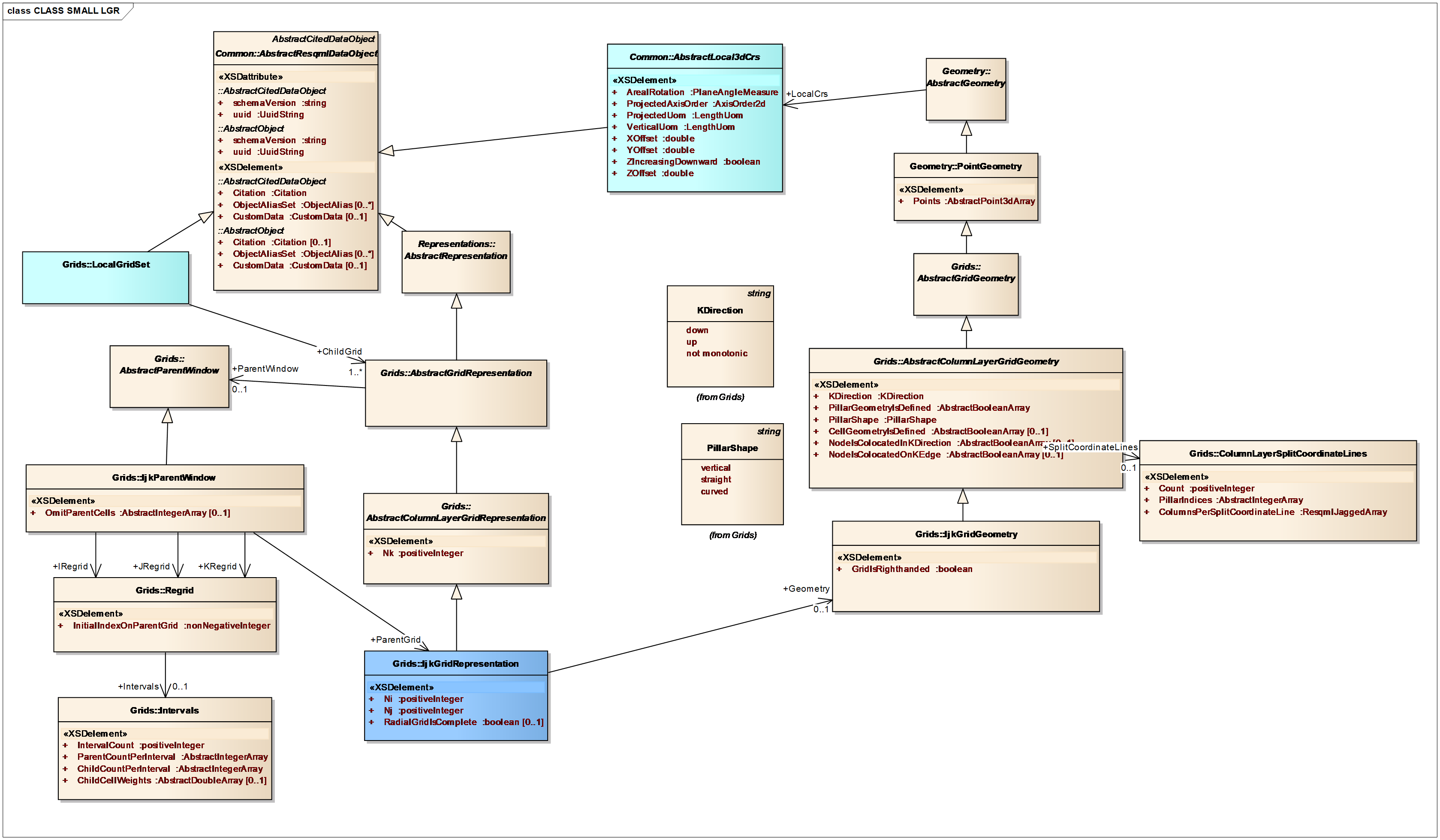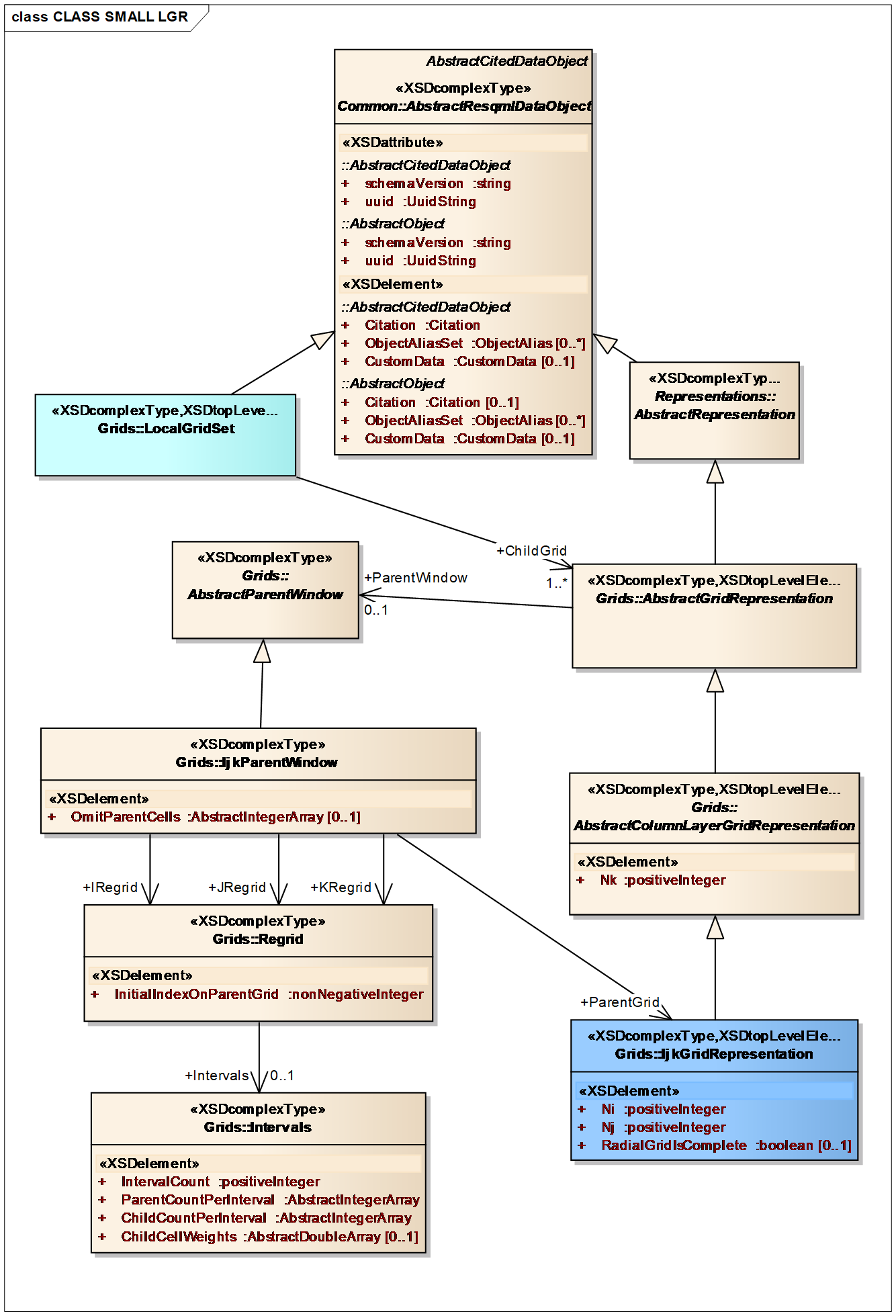11.19.5 Small IJK Grid with Nested Local Grid Refinement
| Topic Version | 1 | Published | 09/11/2015 | |
| For Standard | RESQML v2.0.1 | |||
Figure 11.19.5-1 and Figure 11.19.5-2 is a grid example that shows the use of grid parentage and local grids. Grid parentage allows one grid to inherit geometry and properties from a parent grid, but has no immediate impact on the parent grid. Local grid sets are used to “activate” local grids and replace portions of the parent grid by the corresponding child grid or grids. (For more information on local grids, see 11.8 Local, Child and Parent Grids . The RESQML construction is sufficiently general to allow both nested and irregularly shaped local grids. It is also sufficiently general to support refinement, coarsening, or combinations of the two.

Figure 11.19.5-1 is similar to the IJK grids examined previously, with the exception of the grid parentage construction. No properties are included within this example.

Figure 11.19.5-2 shows the portion of the grid parentage construction based on an IJK grid parent. It supports I, J, and K regrid specifications.


In Figure 11.19.5-4 , the grid on the far left of the top diagram (SMALL_LGR) is a grid with explicit specification of its geometry. Local grid set 1 activates grids LGR1 and LGR3. Local grid set 2 activates grid LGR2. LGR1 and LGR3 have SMALL_LGR as their parent. LGR2 is nested in LGR1.

In Figure 11.19.5-5 , we examine the regrid construction for grid LGR3. The parent window is positioned starting at parent cell (I,J,K)=(4,1,1). The I and J regrids are identical and represent a factor of 2 grid refinement. The K regrid uses two intervals to indicate that K=1 is mapped to K=1 and that K=2 is mapped to K=2.